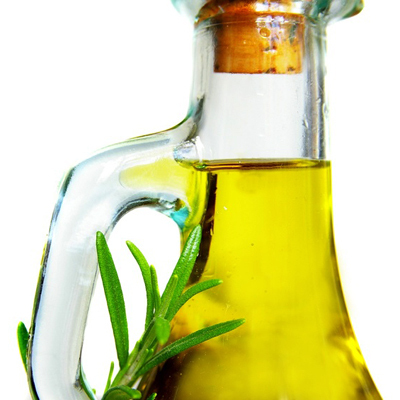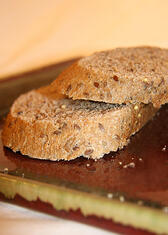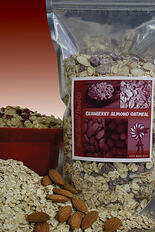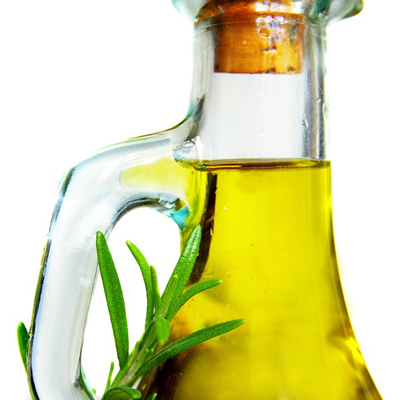Fat Free does not equal Healthy
Unfortunately for the human body, fat has gained a reputation as a villain in the eyes of many as it has been related to weight gain and chronic disease. A lot of people, even I prior to my studies in the field of nutrition, had the false impression that making an attempt to eradicate fat from the diet is a healthy habit. Let me tell you, this is not entirely the case. Fat can be dangerous in excess but does have a purpose and promotes a healthy body when you include the right kinds and limit the dangerous kinds in your diet.
Completely eliminating fat from the diet can result in retarded growth, dermatitis, kidney lesions, poor fetal brain development, depression, vitamin deficiency, and even early death. Fat functions in the absorption of certain vitamins called fat soluble vitamins which include Vitamin A, D, E, and K. It also has the same function for certain phytochemicals called carotenoids which are also unable to be stored in the body without fat. Food items that have been altered to become low fat are also often times sugar laden and not always the best alternative.
Functional Fat
Fat plays an important role in the structural framework of your cell membranes. It allows for the fluid movement of the membrane and greater flexibility for the functional proteins that reside there. This can make the skin appear and feel more supple and smooth. Fatty acids are also used to produce hormones and bile which aids in digestion.
Fat stores are referred to as adipose tissue and form when you consume excess calories. This adipose tissue isn’t entirely bad when kept at a healthy amount. It surrounds your organs and bones to act as mechanical insulation (or a cushion) to protect them from injury. Think about if you fall down. You typically land on your bottom or catch yourself with your hands. Now think about the fat that collects in your buttocks and the pads of your hands and how you would feel if it was just bone in those areas hitting the ground when you fall. Ouch is right! The body salvages this fat and instead uses carbohydrates as a preferred source of energy so it can preserve that protective layer.
Adipose tissue also acts as a thermal barrier against the cold to keep you warm in the winter and provides energy in times of starvation. Unfortunately, periods of starvation are rare in the modern world and these fat stores tend to increase to dangerous levels. Maintaining a proper energy balance (calories in equals calories burned) can avoid this problem and lead to maintenance of a healthy body weight. Remember, fat packs 9 calories per gram as opposed to carbohydrates and protein carrying only 4 calories per gram. So when consuming fats, even healthy fats like those from walnuts or olive oil, be sure to do so in moderation to prevent excess calorie intake and weight gain.
Favorable Fats
So the underlying question remains… what are the good fats and what are the bad fats? The good fats are unsaturated fats called mono-unsaturated fats and polyunsaturated fats (MUFAS and PUFAS). These fats decrease total cholesterol and lower LDL (bad) cholesterol. MUFAs also are known to increase the good cholesterol called HDL. These fats are unsaturated with hydrogen atoms in their chemical makeup and thus are fluid at room temperature, meaning they are oils. The fats you should really focus on in this area are the Essential Fatty Acids (meaning you need to consume them from your diet because your body cannot make them). These are the omega 3 and omega 6 Fatty Acids you hear about so often, and for a good reason too! These fatty acids are necessary for child growth and development, maintenance of healthy
what are the bad fats? The good fats are unsaturated fats called mono-unsaturated fats and polyunsaturated fats (MUFAS and PUFAS). These fats decrease total cholesterol and lower LDL (bad) cholesterol. MUFAs also are known to increase the good cholesterol called HDL. These fats are unsaturated with hydrogen atoms in their chemical makeup and thus are fluid at room temperature, meaning they are oils. The fats you should really focus on in this area are the Essential Fatty Acids (meaning you need to consume them from your diet because your body cannot make them). These are the omega 3 and omega 6 Fatty Acids you hear about so often, and for a good reason too! These fatty acids are necessary for child growth and development, maintenance of healthy  skin, and are the precursors for hormones called Eicosonoids. These hormones effectively influence size and permeability of blood vessels, platelet activity, blood clotting, and the processes of inflammation in the body. This has a beneficial effect in the prevention and management of many chronic diseases including cardiovascular disease and arthritis. Omega 3 fatty acids also play an integral role in maintaining healthy brain and nerve function. Typically, the average American consumes enough omega 6 fatty acids on a daily basis from such oils as corn, wheat germ, vegetable, and safflower oils. Omega 3 fatty acids are not as widely consumed. These are primarily from marine sources such as salmon, mackerel, sardines, crab, shrimp, and cod liver oil. It is recommended that you consume fatty fish at least two times a week by the American Heart Association to get your omega 3 fix. It is more important to focus on the omega 3 fatty acids as excess omega 6 fatty acids can lead to the inability of your body to convert these fatty acids into the active form they need.
skin, and are the precursors for hormones called Eicosonoids. These hormones effectively influence size and permeability of blood vessels, platelet activity, blood clotting, and the processes of inflammation in the body. This has a beneficial effect in the prevention and management of many chronic diseases including cardiovascular disease and arthritis. Omega 3 fatty acids also play an integral role in maintaining healthy brain and nerve function. Typically, the average American consumes enough omega 6 fatty acids on a daily basis from such oils as corn, wheat germ, vegetable, and safflower oils. Omega 3 fatty acids are not as widely consumed. These are primarily from marine sources such as salmon, mackerel, sardines, crab, shrimp, and cod liver oil. It is recommended that you consume fatty fish at least two times a week by the American Heart Association to get your omega 3 fix. It is more important to focus on the omega 3 fatty acids as excess omega 6 fatty acids can lead to the inability of your body to convert these fatty acids into the active form they need.
Big Fat No Nos
Now how about those fats you need to watch out for? These include saturated fats and trans fats. Saturated fats are shelf stable and remain solid at room temperature because they are more dense which allows for less fluid movement (it has the same properties in your body). Trans fats are called such because of their chemical arrangement. This arrangement is not the typical form a fatty acid takes in nature. This arrangement is achieved through a process called hydrogenation which transforms the fatty acids in oils into a more shelf stable and solid form. This is why it is found in a lot of processed foods and packaged baked goods. Both of these fats along with high total fat intake and high cholesterol increase the risk of high LDL, high cholesterol, and risk of cardiovascular disease. Trans fats additionally lower HDL, the healthy cholesterol.
So if you’re going to indulge in a treat choose fresh baked like our Dillon cookie made with whole grains, oats, and walnuts instead of prepackaged trans fat loaded cookies, cakes, and bars. If you’re dieting don’t cut out entire food groups, just limit the amount and control what kind you are taking in. Find fun and healthy ways to get healthy fats into the mix like munching on Groovy Granola, eating our Cranberry Almond Oatmeal for breakfast, or making a sandwich with our Flax Oatbran or High 5 Fiber bread.
Dillon cookie made with whole grains, oats, and walnuts instead of prepackaged trans fat loaded cookies, cakes, and bars. If you’re dieting don’t cut out entire food groups, just limit the amount and control what kind you are taking in. Find fun and healthy ways to get healthy fats into the mix like munching on Groovy Granola, eating our Cranberry Almond Oatmeal for breakfast, or making a sandwich with our Flax Oatbran or High 5 Fiber bread.
How do you make sure your family is getting healthy fats in their diet?




